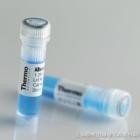
|

| 产地 | 中国/美国 |
| 品牌 | KALANG/进口品牌 |
| 货号 | kl-A017Ra01 |
| 保存条件 | -20℃ |
| CAS编号 | |
| 保质期 | 12个月个月 |
上皮性钙黏附蛋白(CDHE)重组蛋白
Recombinant Cadherin, Epithelial (CDHE)
FOR IN VITRO AND RESEARCH USE ONLY, NOT FOR USE IN CLINICAL DIAGNOSTIC PROCEDURES!
| Organism species | Rattus norvegicus (Rat) |
| Product No. | |
| Source | Prokaryotic expression |
| Host | E.coli |
| Purity | > 95% |
| UOM | 50ug |
| Predicted Molecular Mass | 15.0kDa |
| Concentration | n/a |
| Applications | SDS-PAGE; WB; ELISA; IP. |
| Endotoxin Level | <1.0EU per 1μg (determined by the LAL method) |
| Residues | Arg155~Phe266 (Accession # Q9R0T4) with N-terminal His-Tag |
| Formulation | Supplied as lyophilized form in PBS, pH7.4, containing 5% trehalose, 0.01% sarcosyl. |
上皮性钙黏附蛋白(CDHE)重组蛋白SEQUENCES
The sequence of the target protein is listed below.
MGHHHHHHSGSEFELRRQ-RQKRDW VIPPINCPEN QKGEFPQRLV QIKSNRDKET TVFYSITGPG ADKPPVGVFI IERETGWLKV TQPLDREAID KYLLYSHAVS SNGEAVEDPM EIVVTVTDQN DNRPEF
USAGE
Reconstitute in sterile PBS, pH7.2-pH7.4.
STORAGE AND STABILITY
Storage: Avoid repeated freeze/thaw cycles. Store at 2-8oC for one month. Aliquot and store at -80oC for 12 months.
上皮性钙黏附蛋白(CDHE)重组蛋白Stability Test: The thermal stability is described by the loss rate of the target protein. The loss rate was determined by accelerated thermal degradation test, that is, incubate the protein at 37oC for 48h, and no obvious degradation and precipitation were observed. (Referring from China Biological Products Standard, which was calculated by the Arrhenius equation.) The loss of this protein is less than 5% within the expiration date under appropriate storage condition.
上皮性钙黏附蛋白(CDHE)重组蛋白About the MARKER (complimentary)
Effective Size Range: 10kDa to 70kDa.
Protein bands: 10kDa, 14kDa, 18kDa, 22kDa, 26kDa, 33kDa, 44kDa and 70kDa.
Double intensity bands: The 26kDa, 18kDa, 10kDa bands are at double intensity to make location and size approximation of proteins of interest quick and easy.
Ready-to-use: No need to heat, dilute or add reducing agents before use.
KL989Mu01 碘甲腺原氨酸脱碘酶Ⅲ(DIO3)重组蛋白 Recombinant Deiodinase, Iodothyronine, Type III (DIO3) Mus musculus (Mouse)
KL989Ra01 碘甲腺原氨酸脱碘酶Ⅲ(DIO3)重组蛋白 Recombinant Deiodinase, Iodothyronine, Type III (DIO3) Rattus norvegicus (Rat)
KL994Hu01 网状蛋白4(RTN4)重组蛋白 Recombinant Reticulon 4 (RTN4) Homo sapiens (Human)
KL997Hu01 畸胎瘤衍生生长因子1(TDGF1)重组蛋白 Recombinant Teratocarcinoma Derived Growth Factor 1 (TDGF1) Homo sapiens (Human)
KL998Mu01 神经肽Y受体Y5(NPY5R)重组蛋白 Recombinant Neuropeptide Y Receptor Y5 (NPY5R) Mus musculus (Mouse)
KL999Mu01 神经肽Y受体Y1(NPY1R)重组蛋白 Recombinant Neuropeptide Y Receptor Y1 (NPY1R) Mus musculus (Mouse)
KL999Ra01 神经肽Y受体Y1(NPY1R)重组蛋白 Recombinant Neuropeptide Y Receptor Y1 (NPY1R) Rattus norvegicus (Rat)
KL000Mu01 神经肽Y受体Y2(NPY2R)重组蛋白 Recombinant Neuropeptide Y Receptor Y2 (NPY2R) Mus musculus (Mouse)
KL000Ra01 神经肽Y受体Y2(NPY2R)重组蛋白 Recombinant Neuropeptide Y Receptor Y2 (NPY2R) Rattus norvegicus (Rat)
KL003Hu01 神经肽FF(NPFF)重组蛋白 Recombinant Neuropeptide FF (NPFF) Homo sapiens (Human)
KL003Mu01 神经肽FF(NPFF)重组蛋白 Recombinant Neuropeptide FF (NPFF) Mus musculus (Mouse)
KL007Hu01 腺苷A2b受体(ADORA2b)重组蛋白 Recombinant Adenosine A2b Receptor (ADORA2b) Homo sapiens (Human)
KL011Hu01 甲硫腺苷磷酸化酶(MTAP)重组蛋白 Recombinant Methylthioadenosine Phosphorylase (MTAP) Homo sapiens (Human)
KL012Mu01 γ-氨基丁酸A受体α2(γABRα2)重组蛋白 Recombinant Gamma-Aminobutyric Acid A Receptor Alpha 2 (gABRa2) Mus musculus (Mouse)
KL032Hu01 生长抑素受体2(SSTR2)重组蛋白 Recombinant Somatostatin Receptor 2 (SSTR2) Homo sapiens (Human)
KL039Ra01 组胺H3受体(HRH3)重组蛋白 Recombinant Histamine Receptor H3 (HRH3) Rattus norvegicus (Rat)
KL040Hu01 组胺H4受体(HRH4)重组蛋白 Recombinant Histamine Receptor H4 (HRH4) Homo sapiens (Human)
KL040Mu01 组胺H4受体(HRH4)重组蛋白 Recombinant Histamine Receptor H4 (HRH4) Mus musculus (Mouse)
KL043Hu01 肾上腺髓质素受体(AMR)重组蛋白 Recombinant Adrenomedullin Receptor (AMR) Homo sapiens (Human)
KL045Hu01 G蛋白偶联雌激素受体1(GPER)重组蛋白 Recombinant G Protein Coupled Estrogen Receptor 1 (GPER) Homo sapiens (Human)
KL077Hu01 嘌呤能受体P2X7(P2RX7)重组蛋白 Recombinant Purinergic Receptor P2X, Ligand Gated Ion Channel 7 (P2RX7) Homo sapiens (Human)